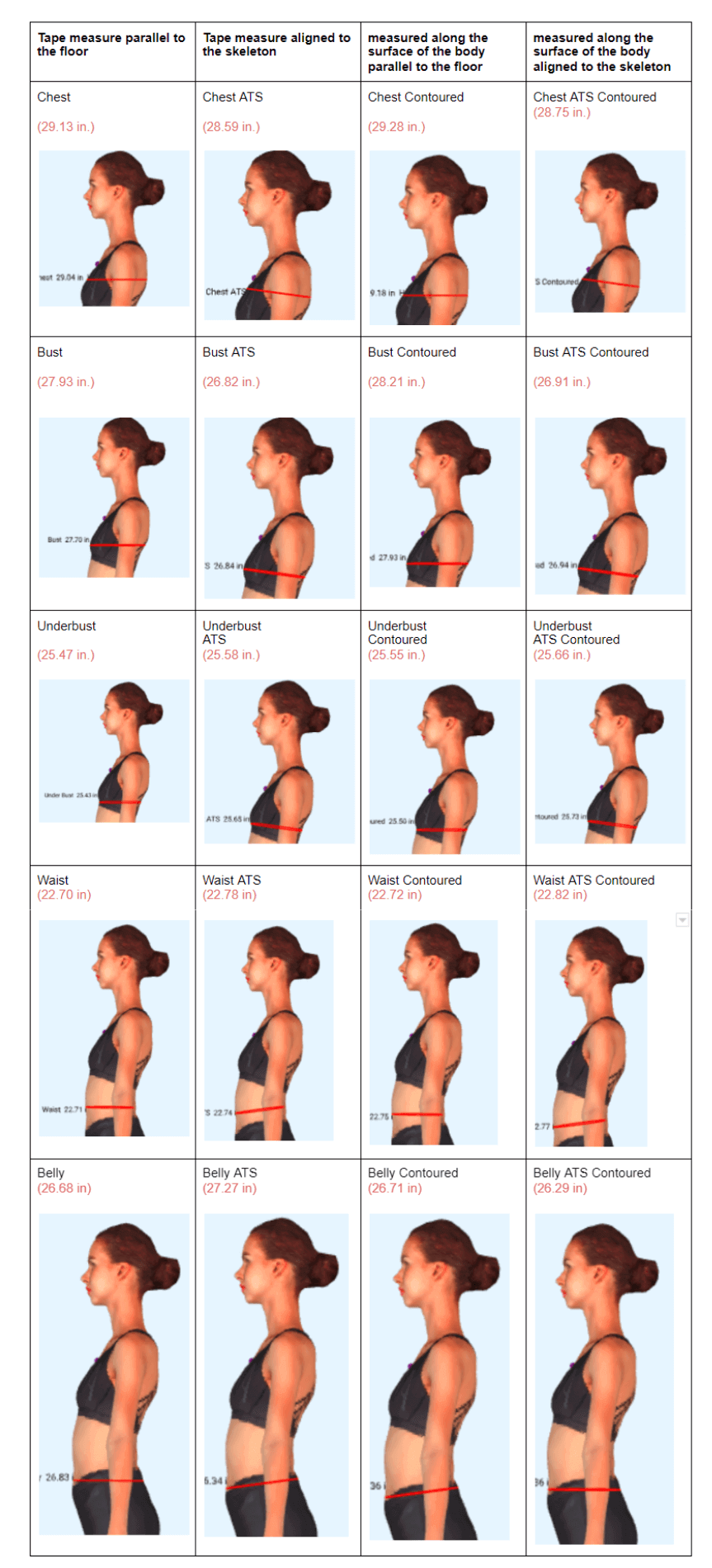What can 3D Measure Up do for you? Your vacuum, dishes, laundry…? Not yet, but for now…
3D Measure Up helps you accurately identify landmarks on objects and provides hundreds of measurement parameters viz. distances, girths, heights, surface areas, volumes etc. We are primarily set to work on 3D scans of the human body (full or partial), but the core technology is extensible to any object or shape. We have taken some very special measures using a combination of computational, geometrical, and machine learning algorithms to give you very accurate results. 3D Measure Up extracts about 130+ unique measurements from a 3D scan of a human body.
The measurements can be :
1. Landmark points
2. Surface Length
3. Straight Lengths
4. Girths or Circumferences
5. Free-Fall lengths
6. Custom Measurements
Landmark Points
These are clearly defined points on the body that can be used for defining anthropometric measurements. They are described by their level from the ground and position in the 3D World.
Some of the common landmarks are illustrated below:


a. Center Neck Point b. Left Side Neck Point.

c. Crotch Point
Surface Length
Surface length is the distance between two points on the body measured along the surface of the body.


d. Back Neck Point to Knee Length e. Outer Arm length
Straight Length
Straight length is the straight line distance between two points on the body. It ignores the body shape and surface. They are useful for applications like prosthetics.
Straight distance between the chin and base of the neck (f. Straight Length demonstrating the distance between chin and the base point of the neck.)


f. Straight distances along the arm g. Straight distance between the shoulder and wrist.
Griths or Circumferences
Girths are circumference measures at standard anatomical sites around the body, measured with a tape measure. Girth measurements can be used in determining body size and composition, and to monitor changes in these parameters.


h. Girth at neck end. i. Chest Girth.

j. Waist Girth
Difference between Parallel to Ground and Aligned to the Skeleton Girths
The girth axis may be aligned to the skeleton of the body or it may be perpendicular to the floor.
Girths on the arms, legs, and feet are always aligned to the skeleton. 3D Measure Up offers both girths on the head, neck, and torso regions.
(k. Girth measurement aligned to the body/skeleton.)


k. Girths Aligned to the skeleton l. Girths Parallel to the Ground/Floor
Difference between Tape and Contoured Girth measurements
A tape measure is using tape, these are typically used for regular apparel applications.
Contoured is along the path on the surface of the body. These are typically used for functional clothing.
The images below show both contoured and tape girth measurements for the chest:


m. Contoured Chest Girth


n. Tape Measure for Chest Girth
The following table shows the different types of girth measurements along the human torso, their difference in measured values, and the way the measurement is extracted. The figures in red are measured values for the 3D Measure Up’s demo model.

Free-Fall lengths
Free-Fall length is the length of the trajectory followed by a dewdrop starting at a point on the body and flowing down the body by effect of gravity. This is useful when we like to do such a measurement for cloth which involves partial measurement on the body surface and partially hanging down freely.
Back Neck point to the ground From a point on the waist to the ground


o. Free fall length
Custom or User-defined measurements
3D Measure Up attempts to cover most use cases. But there are some measurements that have not been incorporated yet. Some measurements could be proprietary to the user or organization.
To accommodate such scenarios 3D Measure Up offers tools to add custom measurements like
1. Girth defined using two points on the body
2. Length measurements
The image below shows a girth measurement along the Mid sagittal plane.

p. Custom measurements
This video demonstrates how to use the 3D Measure Up Web application, to add Custom Measurements and adjust automatically extracted measurements to suit a specific use case. Custom measurements can be added using the Web API, refer to the API documentation for more information.
References:
Contact us:
3dmeasureup@prototechsolutions.com
3D Measure Up




